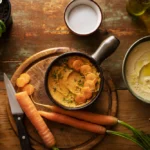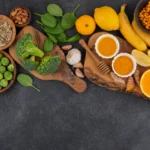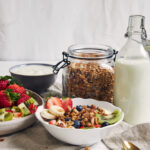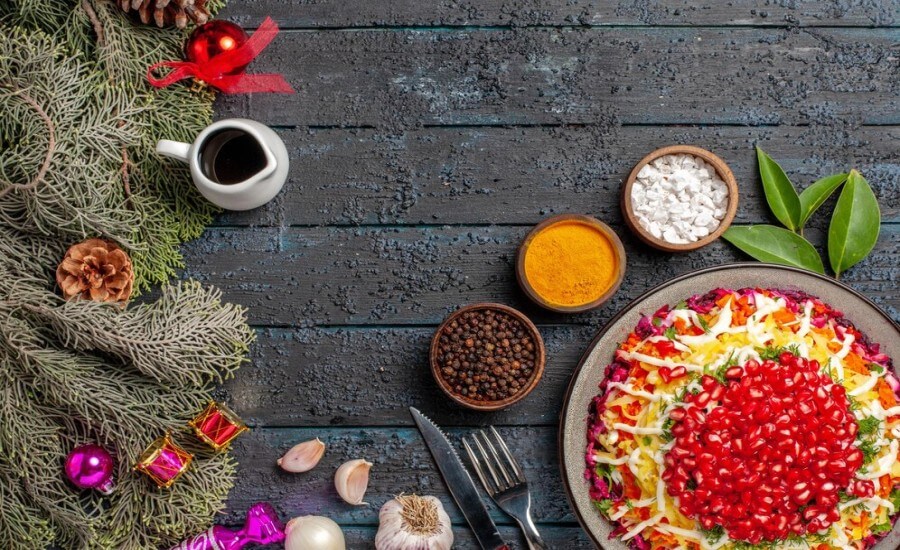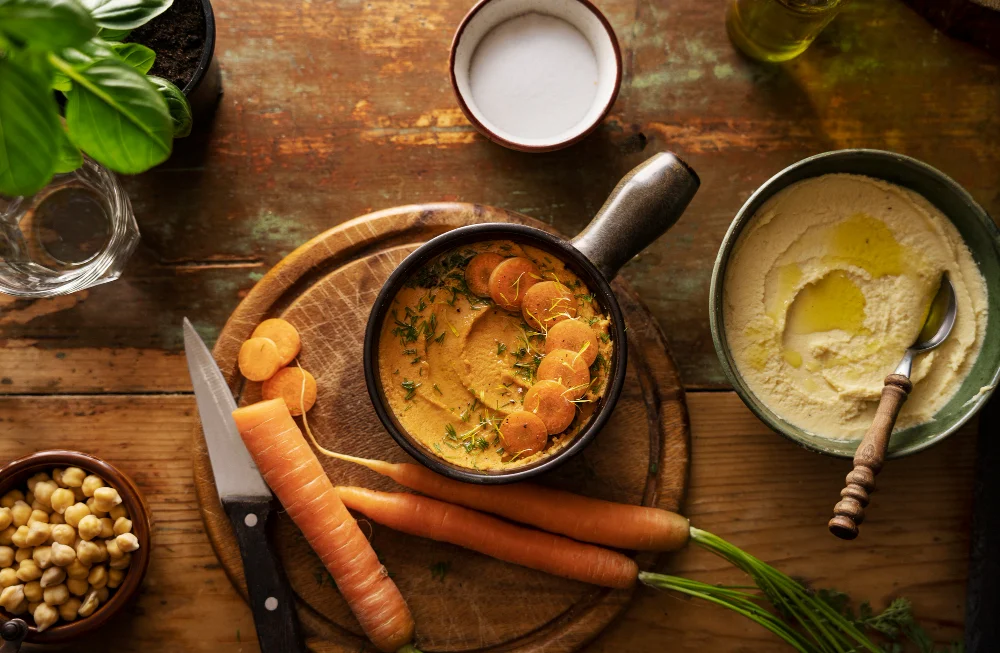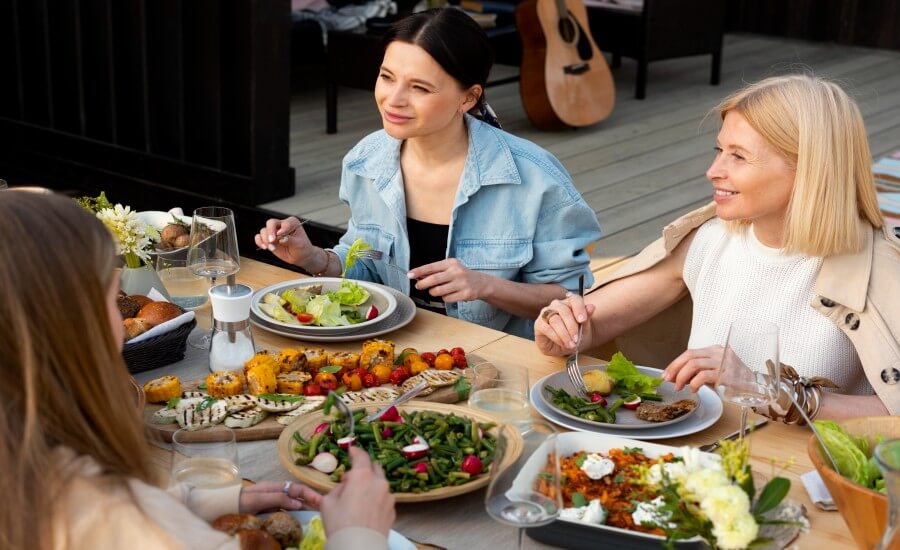The landscape of holiday entertaining has evolved dramatically, with vegan holiday recipes moving from the fringe to the center of the table at festive gatherings. This comprehensive analysis examines plant-based holiday cuisine through multiple perspectives culinary creativity, cultural traditions, nutritional considerations, practical implementation, and social dynamics offering a holistic understanding of how plant-based ingredients can create memorable holiday experiences. From centerpiece mains that rival traditional roasts to innovative twists on classic sides and decadent vegan desserts, vegan holiday cooking represents a fascinating convergence of tradition, innovation, and compassionate celebration that transforms festive occasions while honoring their essence.
Celebratory Crossroads: Where Holiday Tradition Meets Plant-Based Innovation
The holiday table has long been centered around animal products, from the Thanksgiving turkey to the Christmas ham to Easter lamb. However, as plant-based eating grows in popularity, vegan holiday recipes have evolved from simple sides to sophisticated full menus that can satisfy both longtime vegans and curious omnivores. This analysis explores how vegan holiday cooking has become an exciting culinary frontier that honors traditional flavors and experiences while creating new traditions aligned with changing values around health, sustainability, and compassion.
LENS 1: The Culinary Artist’s Perspective
The Creative Evolution of Vegan Holiday Cuisine
“Vegan holiday cooking is one of the most exciting culinary playgrounds today,” explains Chef Marcus Wong, author of “Festive Plant-Based: Reimagining Holiday Classics.” “The constraints of creating plant-based versions of deeply traditional dishes force chefs to be more creative, resulting in innovations that often surpass the originals in complexity and satisfaction.”
Culinary Deep Dive: Reimagining Holiday Centerpieces
The evolution of vegan main dishes shows remarkable sophistication:
Holiday Roast Innovations
- Seitan-Based Roasts: Using vital wheat gluten to create protein-rich centerpieces with satisfying texture
- Vegetable Wellington: Whole butternut squash, mushroom, or beet versions wrapped in flaky pastry
- Stuffed Vegetables: Elegant presentation of holiday-spiced grains and legumes in colorful bell peppers, pumpkins, or acorn squash
- Lentil and Mushroom Loaves: Hearty, sliceable options featuring umami-rich ingredients and classic holiday herbs
Sauce Developments
Traditional holiday meals rely heavily on rich sauces and gravies, which now have excellent vegan counterparts:
- Mushroom-Based Gravies: Creating depth with dried and fresh mushrooms, miso, and herbs
- Caramelized Onion Sauces: Slow-cooked onions providing natural sweetness and complexity
- Cranberry Innovations: Moving beyond basic sauce to cranberry glazes, foams, and chutneys
- Savory Fruit Combinations: Incorporating pomegranate, orange, or apple to balance richness
Voice of Experience: The Chef’s Journey
“When I began developing `fifteen years ago, I focused on directly mimicking traditional animal-based dishes,” shares Sophia Ramirez, executive chef at Plant Forward Kitchen. “Today, my approach has evolved—I honor the essence of holiday classics while allowing plant ingredients to shine in their own right. My mushroom and chestnut wellington doesn’t pretend to be beef; instead, it offers its own complex, satisfying experience that happens to be plant-based.”
Flavor Architecture: Building Holiday Memories
The most successful vegan holiday recipes incorporate specific flavor principles:
- Layered Umami: Combining ingredients like mushrooms, miso, nutritional yeast, and tomato paste for depth
- Textural Contrasts: Ensuring dishes offer multiple textures from crispy to creamy to chewy
- Aromatic Holiday Spices: Incorporating sage, rosemary, thyme, nutmeg, and cinnamon
- Visual Drama: Creating impressive presentations that honor the celebratory nature of holidays
LENS 2: The Cultural Traditionalist’s View
Honoring Heritage Through Plant-Based Interpretation
“Holiday food traditions run deep, connecting us to our cultural heritage and family history,” explains Dr. Elena Morales, food historian specializing in cultural food traditions. “The challenge and opportunity of vegan holiday cooking is preserving these emotional and cultural connections while adapting the actual ingredients.”
Cultural Deep Dive: Global Holiday Traditions Reimagined
Around the world, holiday traditions are being thoughtfully adapted to plant-based preparations:
Christmas Traditions
- European Yule Logs: Vegan versions of bûche de Noël using aquafaba meringue and plant-based creams
- Italian Feast of Seven Fishes: Reimagined with marinated carrot “salmon,” hearts of palm “calamari,” and king oyster mushroom “scallops”
- British Christmas Pudding: Updated with flax eggs and plant-based suet alternatives
Jewish Holiday Adaptations
- Passover Seders: Vegan matzo ball soup using chickpea flour binders
- Hanukkah Celebrations: Oil-fried traditional foods like potato latkes made with aquafaba or starches as binders
- Rosh Hashanah: Symbolic apple and honey replaced with apple and date syrup for vegan honey alternatives
Other Cultural Celebrations
- Lunar New Year: Dumplings and spring rolls with plant-based fillings and traditional lucky ingredients
- Diwali: Dairy-free sweets using coconut milk and cashew-based alternatives
- Thanksgiving: Native American three sisters (corn, beans, squash) centerpieces honoring indigenous traditions
Voice of Experience: The Family Perspective
“My grandmother’s recipes defined our family holidays for generations,” shares Jordan Taylor, cookbook author specializing in veganized family recipes. “When I went vegan, continuing these traditions became my mission. My plant-based version of her stuffing uses all her original herbs and seasonings, just with better vegetable broth and olive oil instead of turkey drippings. The family was skeptical at first, but now they request ‘Grandma’s stuffing’—my version—every year.”
Tradition-Honoring Techniques
Several approaches help preserve the emotional essence of traditional holiday dishes:
- Multi-Sensory Recreation: Ensuring the sounds, smells, and visual cues of traditional holidays remain
- Participatory Preparation: Maintaining family cooking rituals even as ingredients change
- Story Preservation: Sharing the history and meaning behind dishes as they’re adapted
- Gradual Adaptation: Incrementally modifying recipes to maintain familiarity while improving nutritional profiles
LENS 3: The Nutritionist’s Analysis

Balancing Celebration and Nourishment
“Holiday eating often creates tension between celebration and health concerns,” notes Dr. Maya Johnson, registered dietitian specializing in plant-based nutrition. “Vegan holiday cooking offers a unique opportunity to create festive dishes that satisfy traditional cravings while providing superior nutritional profiles.”
Nutritional Deep Dive: The Science of Plant-Based Celebration
From a nutritional perspective, vegan holiday meals offer several advantages:
Nutrient Density Improvements
- Fiber Content: Plant-based holiday meals typically provide 2-3 times more fiber than traditional versions
- Antioxidant Load: Colorful plant ingredients contribute phytonutrients absent in animal-based dishes
- Healthier Fats: Replacing saturated animal fats with plant-based alternatives improves lipid profiles
- Digestive Comfort: Many people report feeling lighter and more comfortable after plant-based holiday meals
Nutritional Challenges & Solutions
Even plant-based holiday meals present nutritional considerations:
- Caloric Awareness: Plant-based doesn’t automatically mean low-calorie; rich ingredients like nuts and oils add up
- Balanced Macros: Ensuring adequate protein through thoughtful incorporation of legumes, nuts, and other plant proteins
- Mindful Indulgence: Creating satisfying desserts and treats that balance celebration with nutrition
- Alcohol Considerations: Developing sophisticated non-alcoholic options and ensuring vegan wine/beer choices
Strategic Ingredient Usage
Certain ingredients offer both nutritional benefits and holiday appeal:
- Legumes: Providing protein, fiber, and satisfying texture in main dishes
- Winter Squashes: Offering natural sweetness, vibrant color, and nutrient density
- Cruciferous Vegetables: Adding cancer-fighting compounds and satisfying texture
- Nuts and Seeds: Contributing protein, healthy fats, and richness to holiday dishes
- Dried Fruits: Providing natural sweetness, tradition, and concentrated nutrients
Voice of Experience: The Health Journey
“Holiday meals were once a nutritional disaster zone for me,” shares Morgan Chen, health coach specializing in plant-based transitions. “I’d indulge in traditional foods, feel terrible, then restrict afterwards—a classic cycle. Discovering thoughtfully-created vegan holiday recipes changed everything. Now my celebrations feature mushroom wellington, roasted vegetable sides, and cashew-based desserts that satisfy my taste for tradition without triggering digestive issues or guilt. It’s freedom to truly enjoy the holidays again.”
LENS 4: The Practical Host’s Experience
From Planning to Plating: Making Vegan Holidays Happen
The practical aspects of executing vegan meals involve considerations beyond recipes—timing, equipment, guest expectations, and host sanity all play crucial roles.
Practical Deep Dive: Strategic Approaches
Successful vegan holiday hosting requires thoughtful planning:
Timeline Strategies
- Make-Ahead Components: Identifying dishes that improve with resting time (cranberry sauce, desserts, certain sides)
- Day-Of Priorities: Focusing fresh preparation on elements that benefit most (roasted vegetables, crispy toppings)
- Staggered Cooking Schedule: Maximizing limited oven and stovetop space through timed rotations
- Assembly Versus Cooking: Preparing components in advance for last-minute assembly
Equipment Considerations
Hosting vegan holiday meals may require specific tools:
- High-Powered Blender: Essential for creamy sauces, desserts, and cheesy elements
- Food Processor: Helpful for chopping, slicing, and creating textured elements
- Multiple Baking Dishes: Necessary for preparing various components simultaneously
- Serving Equipment: Ensuring proper presentation with appropriate platters, serving utensils, and warming tools
Guest Experience Management
Creating positive experiences for all guests requires consideration:
- Familiar Entry Points: Offering recognizable dishes for hesitant guests to try first
- Labeling Strategies: Identifying dishes by what they are rather than what they’re not (“Mushroom and Chestnut Roast” versus “Vegan Meatloaf”)
- Participatory Elements: Creating interactive serving stations or build-your-own options
- Beverage Pairings: Suggesting complementary drinks that enhance plant-based flavors
Voice of Experience: The Host Perspective
“My first vegan holiday dinner was a near disaster,” shares Alex Rodriguez, event planner and food blogger. “I tried making everything from scratch on the day, got overwhelmed, and ended up serving dishes at different temperatures while looking frazzled. Now I plan meticulously—at least 50% of the meal is prepared in advance, I focus on visually impressive but technically simple centerpieces, and I’m relaxed enough to actually enjoy the celebration with my guests.”
LENS 5: The Social Dynamics Analyst
Navigating the Social Landscape of Vegan Holiday Gatherings
“Holiday meals are fundamentally social experiences charged with expectations, traditions, and complex family dynamics,” explains Dr. Amara Thompson, sociologist specializing in food and family systems. “Successfully incorporating vegan options or hosting fully plant-based celebrations requires navigation of these dynamics beyond just the food itself.”
Social Deep Dive: Communication and Inclusion
Several approaches facilitate positive experiences around vegan holiday meals:
Hosting Strategies
- Invitational Language: Framing vegan holiday meals as abundant and inclusive rather than restrictive
- Setting Expectations: Clearly communicating the nature of the meal when inviting guests
- Creating Bridges: Incorporating familiar holiday flavors and presentations to ease transitions
- Focusing on Celebration: Emphasizing the gathering’s purpose beyond dietary choices
Guest Navigation
For vegans attending non-vegan gatherings:
- Proactive Communication: Offering to bring substantial shareable dishes
- Positive Framing: Presenting plant-based contributions as additions rather than criticisms
- Conversation Strategies: Preparing thoughtful responses to common questions about dietary choices
- Finding Connection Points: Identifying shared values around celebration, family, or tradition
Voice of Experience: The Family Navigator
“Holiday meals were initially tense after I went vegan,” shares Jamie Lin, who has documented their family’s evolving holiday traditions. “My grandmother took it as rejection of her cooking, which represented her love and cultural heritage. The turning point came when I asked her to teach me her traditional recipes so I could adapt them while preserving her techniques and stories. Now we cook together, she’s incorporated more plant ingredients into her cooking, and I’ve learned her cherished methods. The food has become a bridge rather than a barrier.”
Shifting Holiday Culture
Broader cultural trends show evolution in how vegan holiday options are perceived:
- Mainstream Acceptance: Growing normalization of plant-based options at holiday gatherings
- Restaurant Offerings: Increased availability of vegan holiday takeout and dining options
- Media Representation: More inclusive depiction of diverse holiday meals in cooking shows and magazines
- Generational Bridges: Younger family members often facilitating introduction of plant-based options
Practical Holiday Recipe Guide
For those ready to incorporate vegan dishes into their holiday celebrations, here’s a practical roadmap:
Thanksgiving Showstoppers
- Stuffed Butternut Squash Roast
- Whole butternut squash stuffed with wild rice, cranberries, pecans, and herbs
- Visually impressive presentation sliced into rounds
- Can be prepared ahead and reheated
- Mushroom and Lentil Wellington
- Classic pastry-wrapped centerpiece with umami filling
- Excellent for slicing and serving with mushroom gravy
- Components can be prepared in advance
- Holiday Sides Reinvented
- Cornbread stuffing with chestnuts and sage
- Green bean casserole with cashew cream and crispy onions
- Sweet potato casserole with pecan streusel
- Cranberry-orange sauce with warming spices
Christmas and Winter Celebrations
- Seitan Holiday Roast
- Herb-crusted protein centerpiece with traditional holiday seasonings
- Accompanied by rosemary roasted potatoes and root vegetables
- Perfect for serving with rich mushroom gravy
- Festive Stuffed Cabbage Rolls
- Pretty-in-pink presentation of savory rice and lentil filling
- Served with tomato-infused sauce for classic flavor
- Make-ahead friendly for stress-free entertaining
- Holiday Dessert Classics
- Spiced apple cranberry crisp with pecan topping
- Chocolate yule log with coffee filling and meringue mushrooms
- Sticky toffee pudding with rich date sauce
Spring and Easter Celebrations
- Spring Vegetable Tart
- Celebration of seasonal asparagus, peas, and fresh herbs
- Flaky pastry base provides elegant presentation
- Perfect room temperature option for brunches
- Carrot and Apricot Tagine
- Moroccan-inspired spring dish with fragrant spices
- Bright colors reflect seasonal renewal themes
- Served with herbed couscous and toasted almonds
- Spring Celebratory Sweets
- Lemon coconut cake with berry decorations
- Carrot cake cupcakes with cashew cream frosting
- Berry crumble bars with oat streusel
Global Holiday Traditions
- Veganized Cultural Classics
- Potato latkes with apple sauce and cashew sour cream
- Tamales with jackfruit carnitas and red chile sauce
- Dumplings with mushroom and cabbage filling for Lunar New Year
- Celebratory Breads and Pastries
- Challah bread using aquafaba wash for golden finish
- King cake with cinnamon filling and colored sugar
- Hot cross buns with dried fruits and spices
Convergent Reflections: The Future of Vegan Holiday Celebrations
When viewed through multiple lenses, the evolution of vegan holiday cooking emerges as a fascinating intersection of tradition, innovation, nutrition, practicality and social change:
- Culinarily sophisticated with increasingly impressive techniques and presentations
- Culturally connected while honoring traditions and emotional food memories
- Nutritionally intelligent balancing celebration with wellbeing
- Practically manageable for hosts at various skill and experience levels
- Socially inclusive creating new traditions while respecting heritage
Common Misconceptions vs. Reality
| Misconception | Reality |
| Vegan holiday meals lack tradition | Many traditional holiday flavors and experiences are preserved while ingredients evolve |
| Plant-based celebrations feel like sacrifice | Well-executed vegan holiday meals offer abundance, satisfaction, and celebration |
| Vegan holiday cooking is too complicated | Options exist for every skill level from simple to advanced |
| Guests will be disappointed | Many omnivores express surprise and enjoyment when trying thoughtfully prepared plant-based holiday dishes |
| Vegan holiday food lacks richness | Modern techniques create decadent, satisfying dishes that honor holiday indulgence |
The Path Forward: Emerging Vegan Holiday Trends
The future of vegan holiday cooking shows several promising directions:
- Fusion Celebrations: Blending cultural traditions and plant-based innovation to create new hybrid holiday classics
- Tech-Enabled Options: Incorporating new plant-based proteins and products that offer convenience without sacrificing quality
- Heritage Vegetable Revival: Featuring heirloom varieties with stories and connections to historical foodways
- Interactive Experiences: Creating more participatory holiday meal traditions beyond passive consumption
- Sustainability Integration: Highlighting local and seasonal ingredients while minimizing waste
The evolution of vegan holiday cooking represents one of the most interesting examples of how food traditions can remain emotionally resonant while adapting to new values and information—demonstrating that celebrating plant-based holidays isn’t about restriction but rather about creating more inclusive, compassionate, and health-supporting traditions for generations to come.

